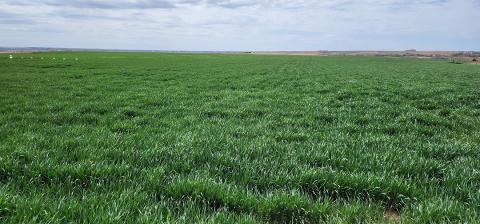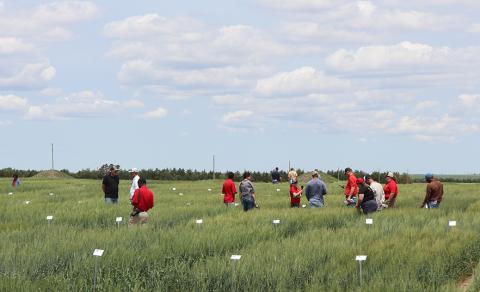
South Central Recommended Varieties
(Updated for 2016)
Recommended varieties listed by 3-year average yield performance (bu/acre) in University of Nebraska variety trials conducted in the South Central region. Click on the variety name for variety description and seed sources.
| Variety (Brand) | Yield (bu/a) |
|
NE10589 (Ruth) (Husker Genetics) |
52 |
|
Mattern * (Husker Genetics) |
44 |
| Freeman (Husker Genetics) | 44 |
| Overland (Husker Genetics) | 44 |
| WB-Cedar (WestBred) | 41 |
* Specialty (waxy) wheat. Can be planted only as an identity-preserved variety.
For more detailed information about Nebraska Extension wheat variety trials, including sites, conditions, and detailed data, visit these sites:
Related Articles
Wheat Disease Update for May 3, 2024
May 1, 2024
Diseases observed in Nebraska wheat fields so far this growing season have been minimal, but producers should be on the lookout for stripe rust, as heavy infections are ongoing in southern states.
Uncommon Wheat Disease in the Nebraska Panhandle in 2023
April 24, 2024
Though rare for semi-arid regions, Fusarium head blight was present in the Nebraska Panhandle's 2023 wheat crop, and its effects have already been observed in this year's crop. This article highlights control options to mitigate yield loss in 2024.
This Week on N Field: Army Cutworm
April 19, 2024
Now is the time to scout for army cutworm in wheat and alfalfa. Learn more about identifying army cutworm damage to crops in this new N Field Observations.
UNL Schedules 2024 Wheat Variety Tours
April 4, 2024
During each of the eight tours across Nebraska in June, members of the UNL wheat research team and seed industry partners will share insights on varieties and answer questions about variety selection, production and pest/disease concerns.
Pasture and Forage Minute: Double Cropping Forages, Wheat Grazing vs. Grain Value
April 3, 2024
Insights on double cropping annual forages in irrigated cropland, avoiding grass tetany, and making the decision to use wheat as forage or grain this year.




